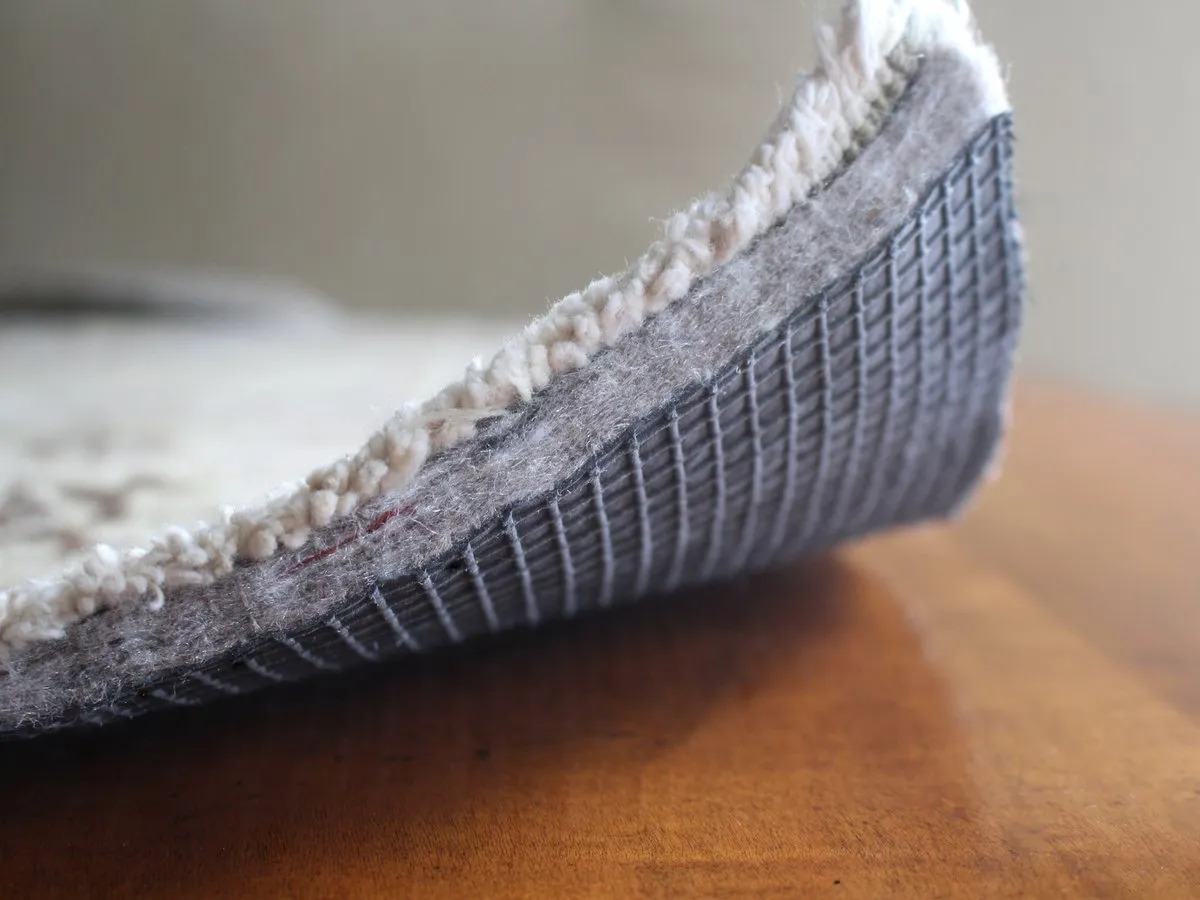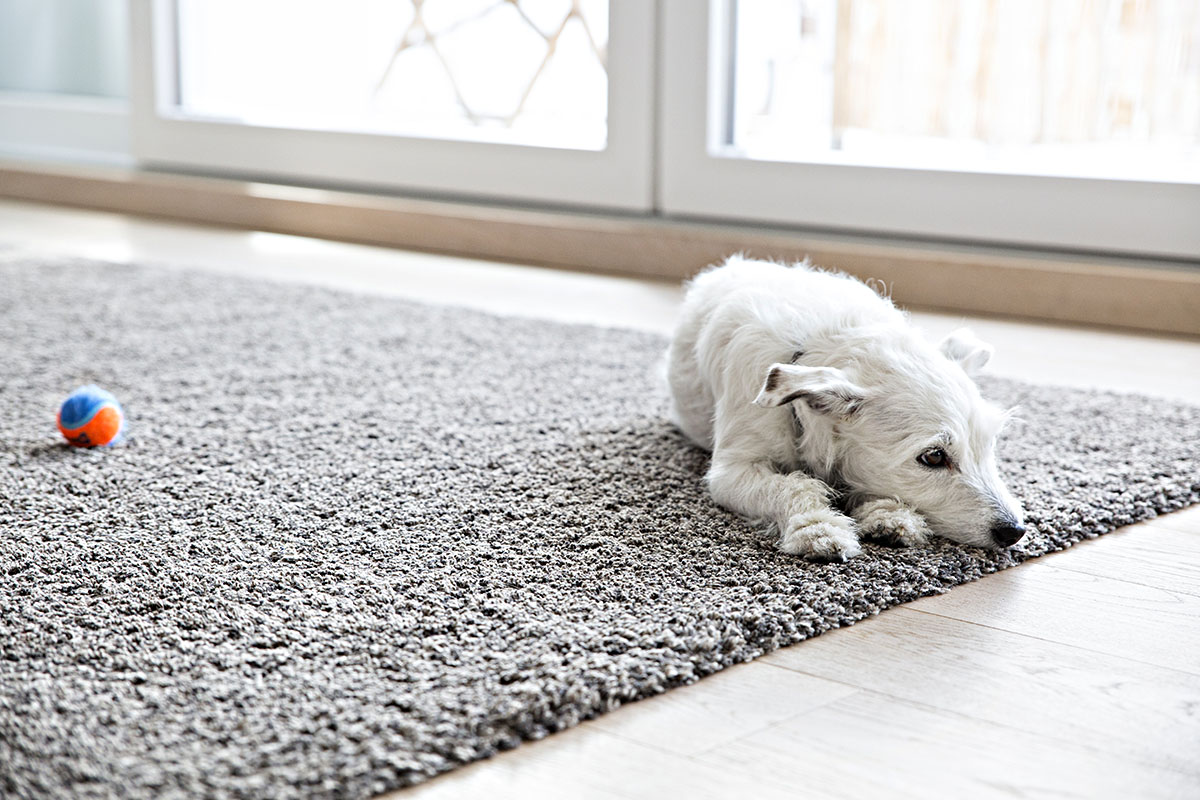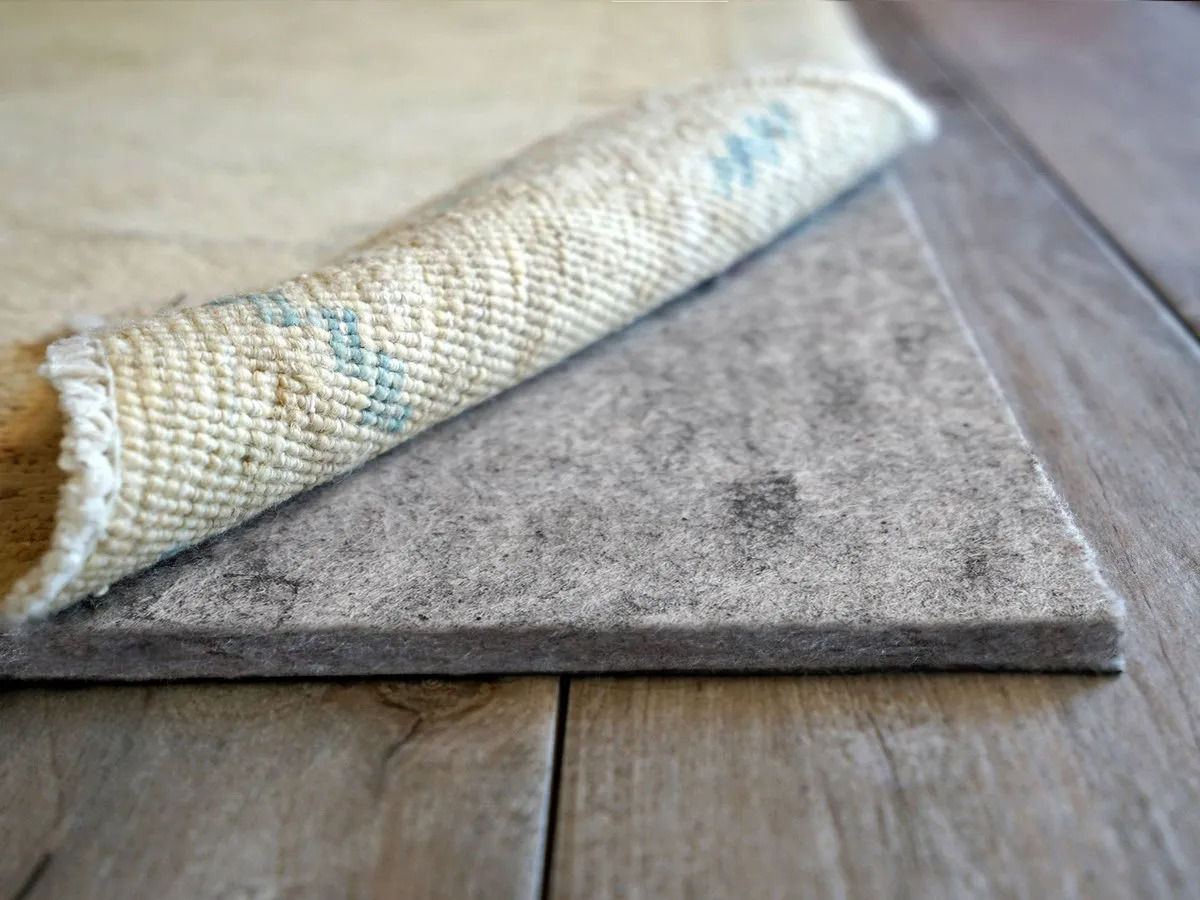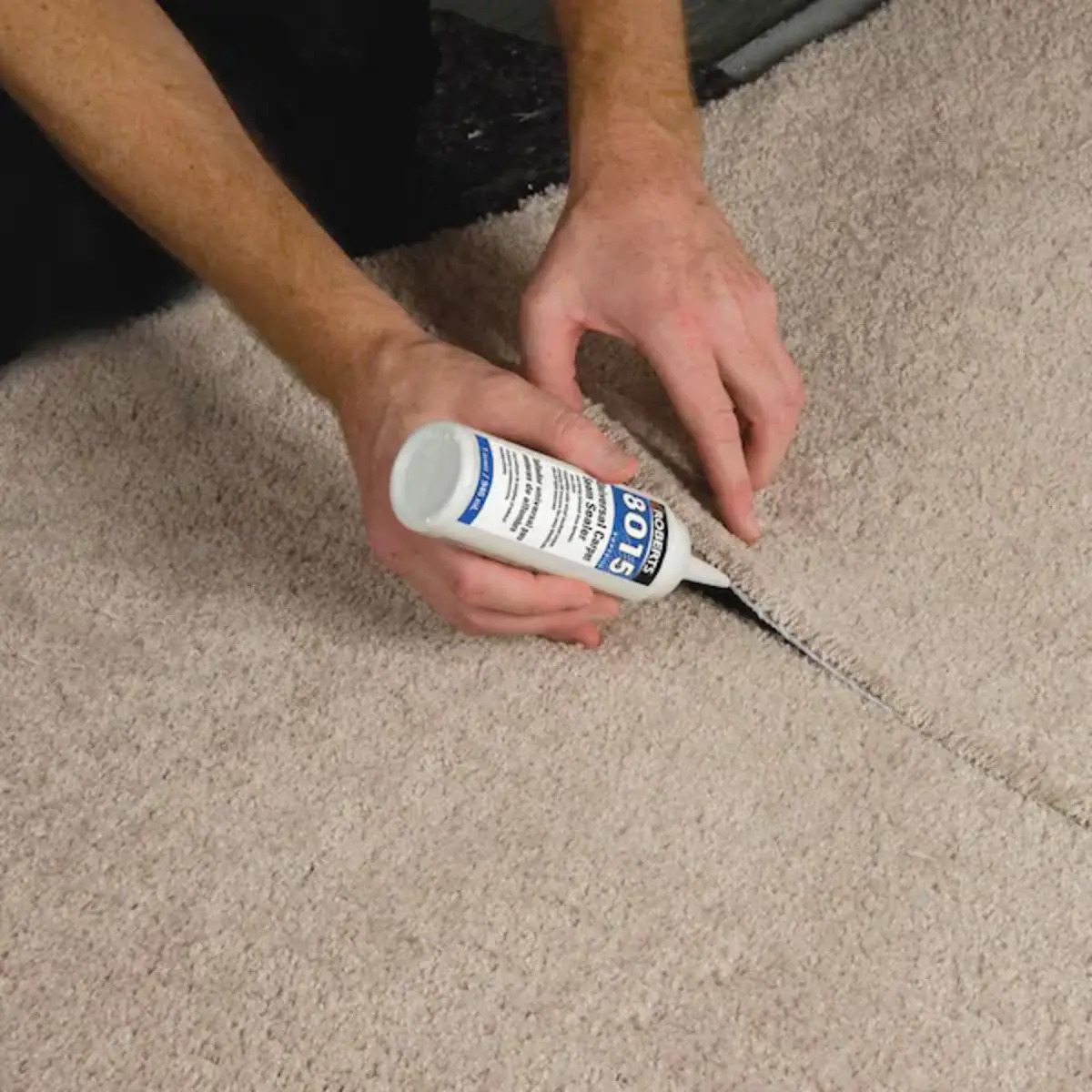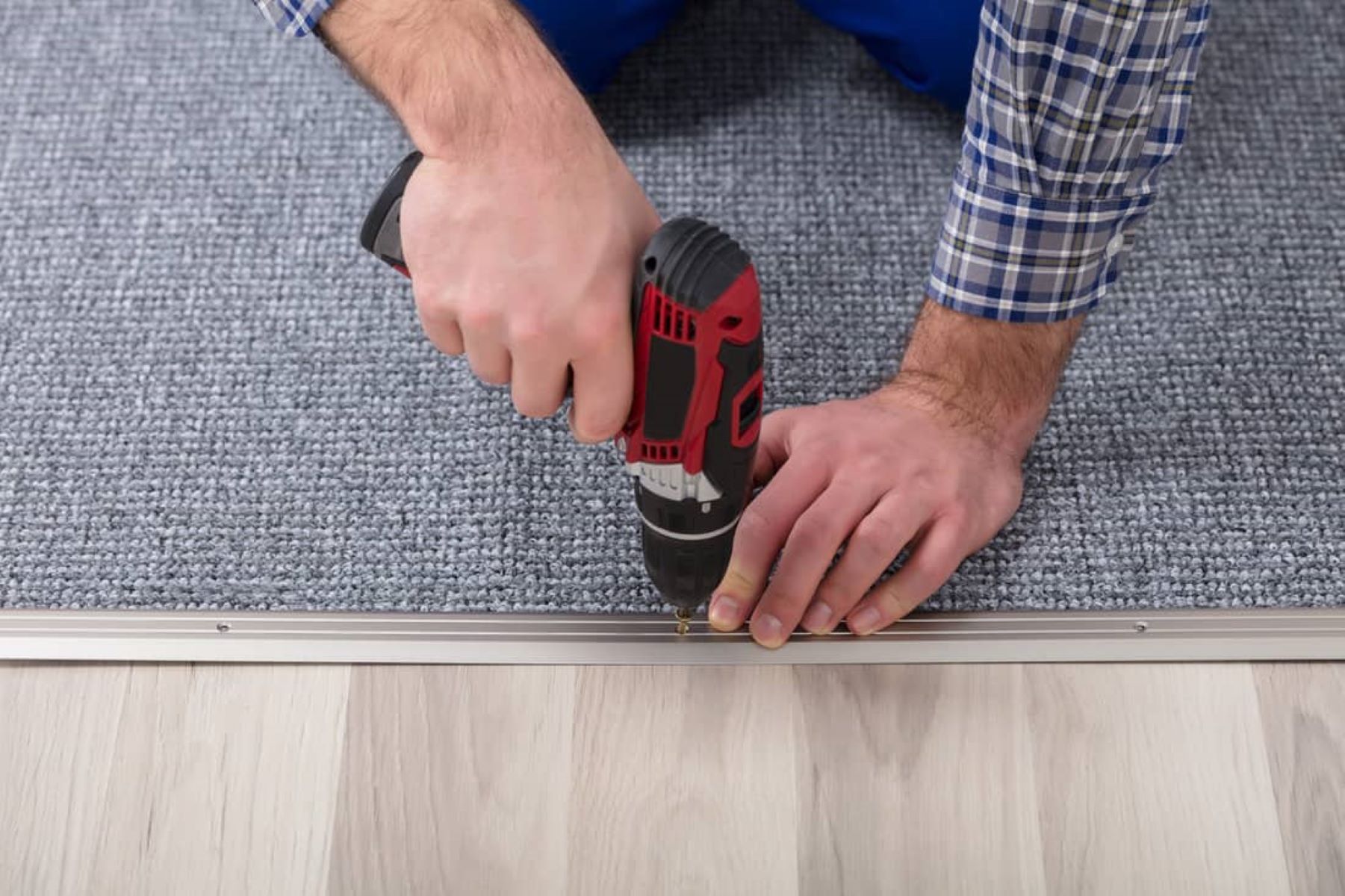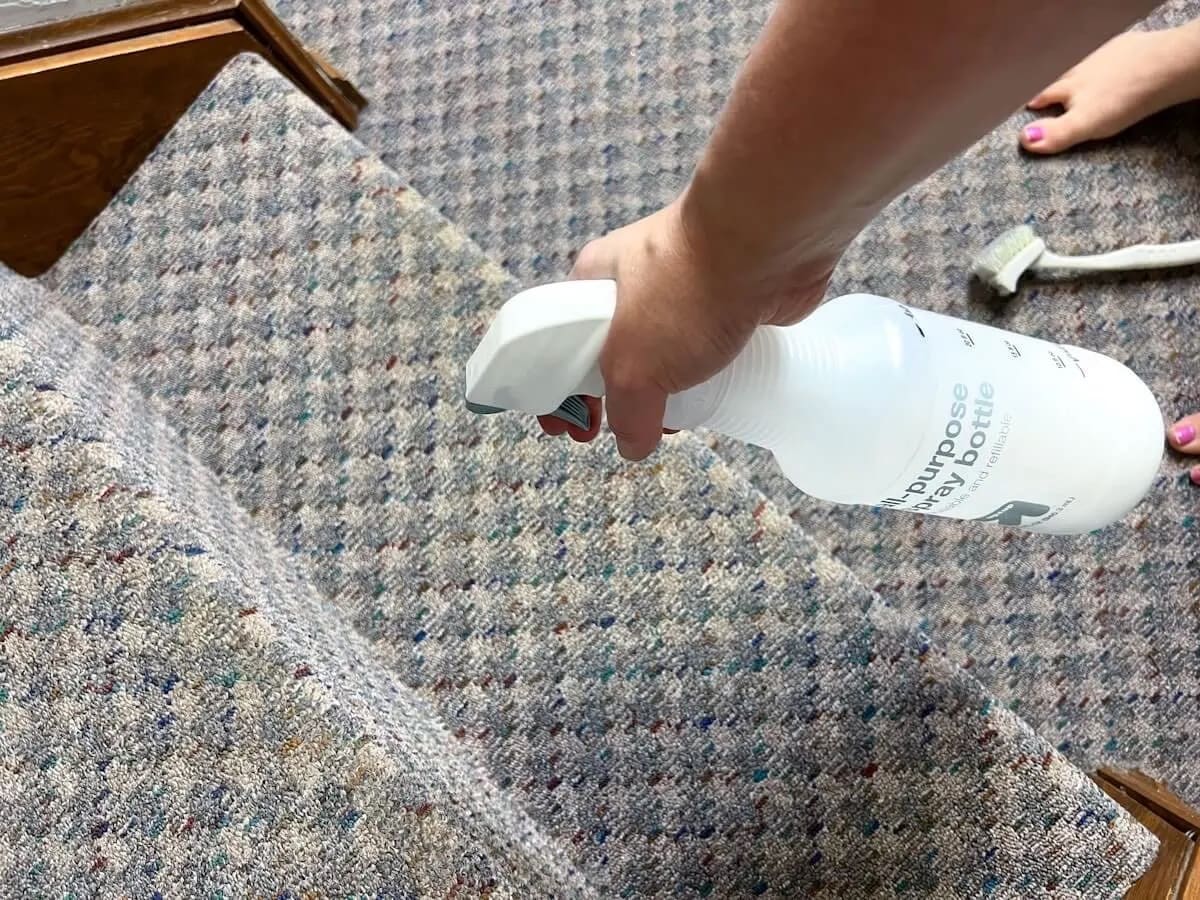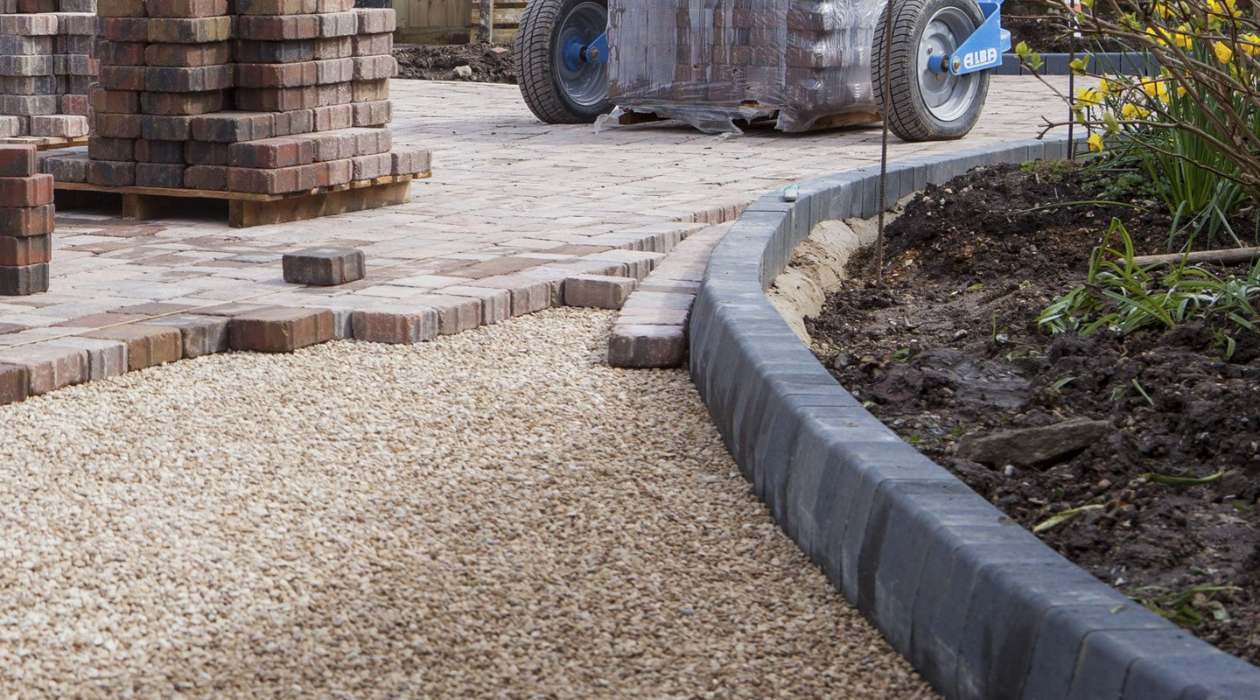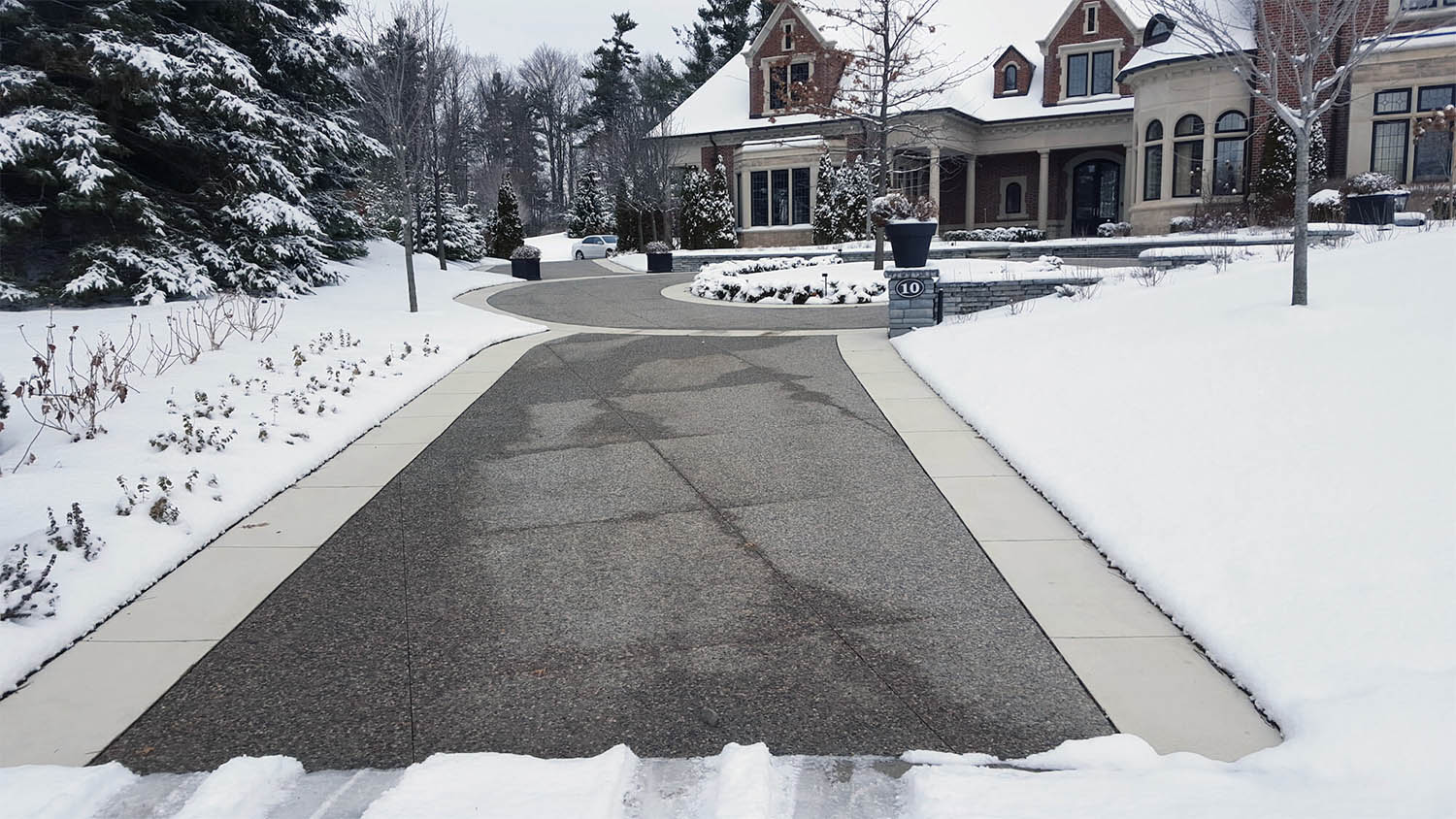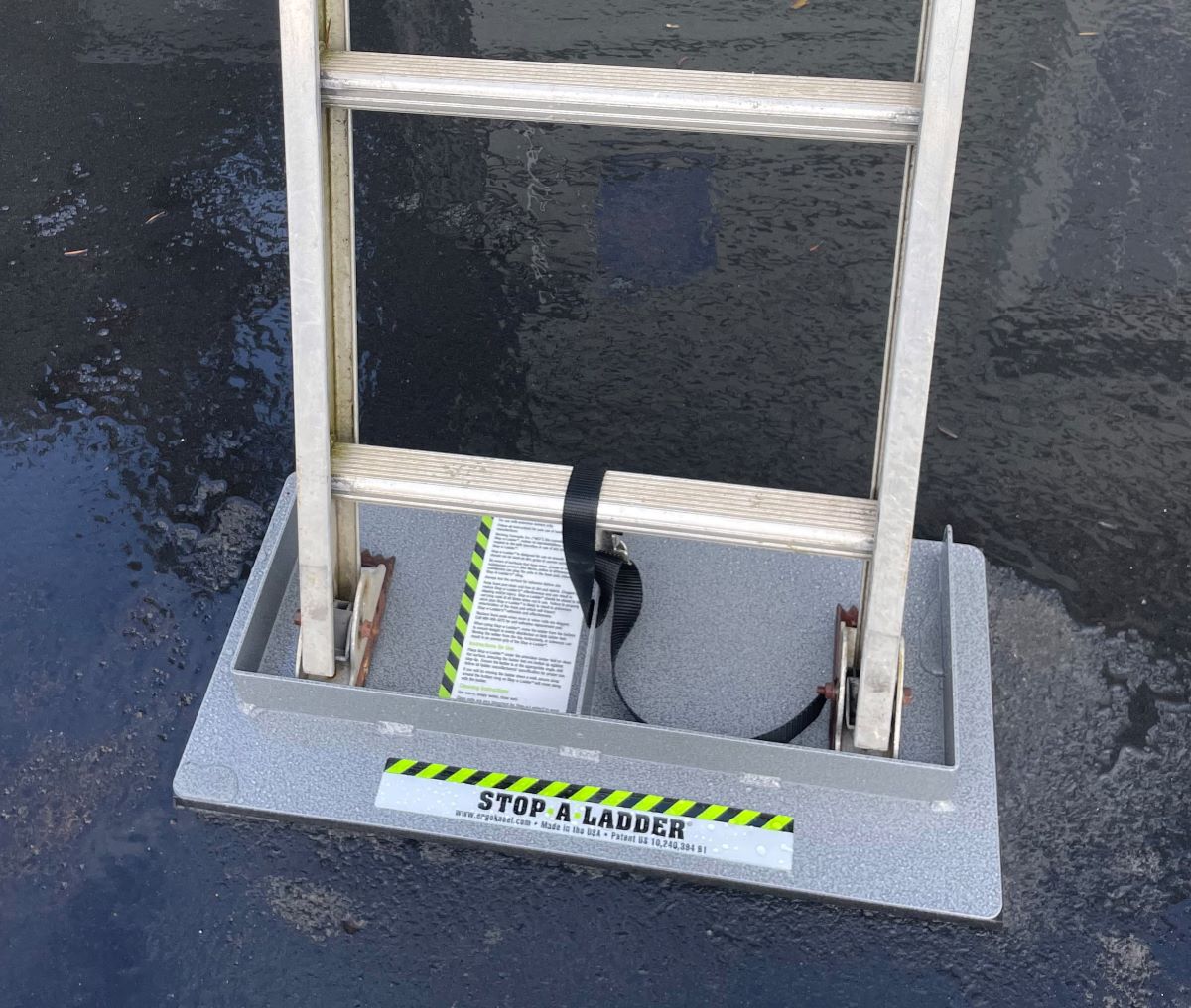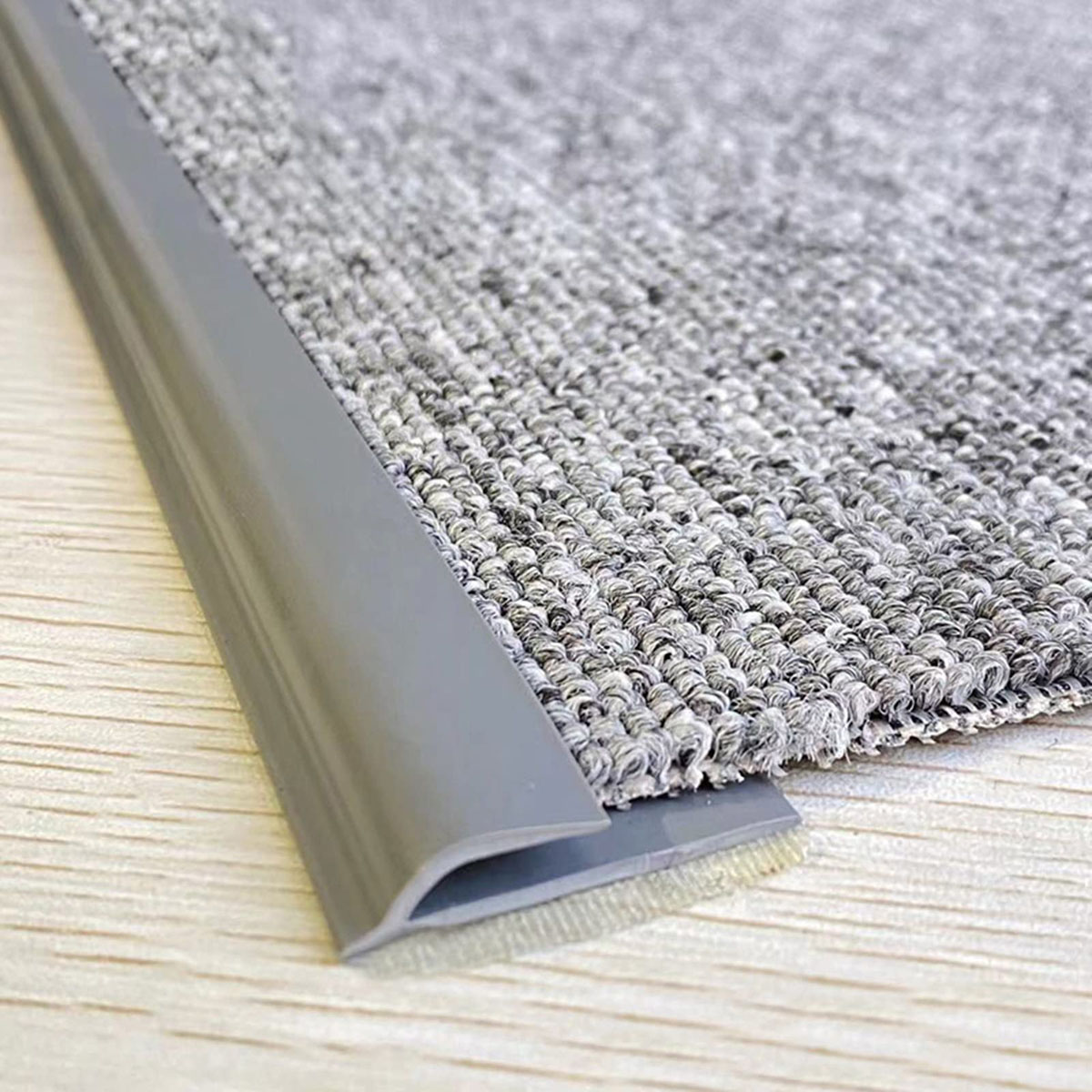

Articles
How To Keep Carpet Edges From Fraying
Modified: October 20, 2024
Discover effective techniques and tips to prevent carpet edges from fraying in this insightful collection of articles. Maintain the pristine condition of your carpets with expert advice.
(Many of the links in this article redirect to a specific reviewed product. Your purchase of these products through affiliate links helps to generate commission for Storables.com, at no extra cost. Learn more)
Introduction
When it comes to maintaining the beauty and longevity of your carpet, one common issue that homeowners face is fraying along the edges. Carpet fraying not only looks unsightly but can also lead to further damage if left untreated. Fortunately, there are several effective methods to prevent carpet edges from fraying, ensuring that your carpet remains in pristine condition for years to come.
In this article, we will explore the causes of carpet fraying, understand why it is important to address the issue promptly, and provide you with practical tips to keep your carpet edges from fraying. By following these tips, you can save yourself the hassle and cost of having to replace or repair your carpet.
Key Takeaways:
- Preventing carpet fraying is crucial for maintaining a visually appealing, durable, and safe flooring. Implementing preventive measures such as regular vacuuming, providing scratch alternatives for pets, and moving furniture with caution can significantly reduce the risk of carpet fraying.
- Options such as binding the edges, using carpet edge tape, applying fray stopper products, sewing or hemming the edges, and using rug grippers offer effective ways to protect carpet edges from fraying. Taking proactive measures now can save you the hassle of dealing with extensive fraying or costly repairs in the future.
Read more: How To Fix A Frayed Carpet
Understanding Carpet Fraying
Carpet fraying refers to the unraveling or wearing away of the carpet fibers along the edges. It often starts as small threads or strands becoming loose and gradually progresses into larger sections of exposed backing material. Fraying can happen due to various reasons, including wear and tear, improper installation, lack of maintenance, or even pets scratching at the edges.
Carpet fraying can be particularly common in high-traffic areas where the carpet is subjected to constant foot traffic and friction. It can also occur over time as a result of age and deterioration. Understanding the causes of carpet fraying is essential in finding effective solutions to prevent further damage.
Additionally, it’s worth noting that certain carpet materials, such as loop pile carpets or Berber carpets, may be more prone to fraying due to the nature of their construction. The loops in these types of carpets can easily catch on objects or snag, causing the edges to fray.
It’s important to catch carpet fraying early on before it spreads further and becomes more challenging to repair. Regular inspections and prompt action can help you address the issue before it escalates. Now that we have a better understanding of carpet fraying, let’s delve into why it is crucial to prevent it.
Causes of Carpet Fraying
Carpet fraying can occur due to various factors, including:
- Poor installation: Improper installation of the carpet, such as not securing the edges properly or using low-quality adhesives, can lead to premature fraying.
- Wear and tear: Over time, regular foot traffic, dragging heavy furniture, or repeated rubbing of the edges against hard surfaces can cause the carpet fibers to wear away and fray.
- Sharp objects: The edges of carpets are vulnerable to damage from sharp objects like scissors, knives, or pet claws. Accidental snags or cuts can cause the carpet fibers to unravel.
- Pet behavior: Pets, especially cats and dogs, have a natural instinct to scratch or dig into surfaces. If they repeatedly scratch at the carpet edges, it can lead to fraying.
- Lack of maintenance: Neglecting regular vacuuming, cleaning, or not addressing spills or stains promptly can weaken the carpet fibers and make them more susceptible to fraying.
Identifying the root cause of the carpet fraying is crucial in determining the appropriate preventive measures. By understanding the causes, you can take proactive steps to prevent further fraying and prolong the lifespan of your carpet.
Importance of Preventing Carpet Fraying
Preventing carpet fraying is essential for several reasons:
- Enhanced aesthetic appeal: Frayed carpet edges can significantly detract from the overall appearance of your room. By preventing fraying, you can maintain a neat and tidy look, enhancing the aesthetic appeal of your space.
- Increased durability: Carpet fraying is often a precursor to further damage. Once the edges start to fray, it can spread to the rest of the carpet, leading to larger areas of unraveling. By preventing fraying, you can extend the life of your carpet and avoid costly repairs or replacements.
- Safety: Frayed carpet edges can pose potential safety hazards. Loose threads or exposed backing material can cause tripping or slipping accidents, especially for young children or elderly individuals. By keeping the edges intact, you ensure a safer environment for everyone in your home.
- Preservation of investment: Carpets can be a significant investment. By preventing fraying, you protect your monetary investment by maximizing the lifespan of your carpet and avoiding the need for premature replacement.
- Maintaining indoor air quality: Frayed carpet edges can release loose fibers into the air, which can impact indoor air quality. By preventing fraying, you minimize the release of these fibers, creating a healthier living environment.
By understanding the importance of preventing carpet fraying, you can prioritize the necessary steps to maintain your carpet’s condition and reap the benefits of a visually appealing, durable, and safe flooring option.
Tips to Keep Carpet Edges From Fraying
To prevent carpet edges from fraying, consider implementing the following tips:
- Regular vacuuming: Keep your carpet clean by regularly vacuuming to remove dirt and debris that can weaken the carpet fibers and contribute to fraying.
- Use carpet runners or rugs: Place carpet runners or rugs in high-traffic areas to reduce the direct impact on the carpet edges, protecting them from excessive wear and tear.
- Trim loose threads: If you notice any loose threads along the carpet edges, carefully trim them using scissors to prevent them from unraveling further.
- Provide scratch alternatives for pets: If you have pets, provide them with designated scratching posts or mats to redirect their scratching behavior away from the carpet edges.
- Move furniture with caution: When moving furniture on the carpet, use furniture pads or sliders to minimize friction and avoid dragging, which can cause the carpet edges to fray.
- Spot clean spills immediately: Attend to spills or stains promptly by blotting them with a clean cloth or using appropriate carpet cleaning solutions to prevent long-term damage that can lead to fraying.
- Protect carpet during renovations: If you are undergoing renovations or repairs in your home, take measures to protect your carpet from potential damage caused by tools, construction debris, or foot traffic.
- Avoid using harsh chemicals: When cleaning your carpet, opt for gentle cleaning products that won’t weaken the carpet fibers, as weakened fibers are more prone to fraying.
- Follow manufacturer guidelines: Adhere to the manufacturer’s recommendations for carpet care and maintenance to ensure you are using appropriate methods and products to prevent fraying.
- Seek professional assistance: If you notice significant fraying or damage to your carpet edges, it is best to seek the help of professional carpet repair services to assess and address the issue.
By incorporating these tips into your carpet maintenance routine, you can effectively prevent fraying along the edges and prolong the life and beauty of your carpet.
Read more: How To Clean The Edges Of A Carpet
Option 1: Binding the Carpet Edges
One effective method to prevent carpet edges from fraying is by binding them. Carpet binding involves applying a strip of fabric or binding tape along the edges of the carpet, securing the fibers and preventing them from unraveling. This method not only adds a protective layer to the edges but also gives a finished and polished look to your carpet.
Here’s how you can bind the carpet edges:
- Measure and cut the binding material: Measure the length of each edge that needs to be bound and add a few extra inches for overlap. Cut the binding material accordingly. You can choose from a variety of fabric binding tapes or opt for professional binding services.
- Prepare the carpet edges: Trim any loose threads or fibers along the carpet edges. Ensure that the edges are clean and dry before proceeding with the binding process.
- Apply adhesive: Apply adhesive glue or carpet seam tape along the edge of the carpet, leaving a small gap between the edge and the adhesive to prevent seepage. Alternatively, use a hot glue gun for a secure and long-lasting bond.
- Attach the binding material: Carefully press the binding material onto the adhesive, starting from one end and working your way to the other end. Apply even pressure to ensure a tight and secure bond. Trim any excess binding material if necessary.
- Finish the edges: Fold the ends of the binding material neatly and secure them using fabric glue or by sewing them together. This will create a clean and finished look.
While binding the carpet edges can be a DIY project, it may require some basic sewing or crafting skills. If you’re not confident in your abilities, it’s best to seek professional assistance or use pre-made carpet binding tapes for a hassle-free option.
Binding the carpet edges is a durable and long-lasting solution that can significantly reduce fraying and prolong the life of your carpet. It not only enhances the appearance of your carpet but also adds a layer of protection, making it a worthwhile investment to safeguard your flooring.
To keep carpet edges from fraying, apply a small amount of fabric glue or fray check along the edges. This will help seal the fibers and prevent them from unraveling.
Option 2: Using Carpet Edge Tape or Binding Tape
If you’re looking for a quick and hassle-free solution to prevent carpet edges from fraying, using carpet edge tape or binding tape is a convenient option. Carpet edge tape or binding tape is a self-adhesive tape specifically designed to secure the edges of the carpet, preventing them from unraveling.
Here’s how you can use carpet edge tape or binding tape:
- Clean and prepare the edges: Ensure that the edges of your carpet are clean and free from any dirt or debris. Trim any loose threads or fibers to create a smooth edge.
- Measure and cut the tape: Measure the length of each edge that needs to be secured and cut the carpet edge tape or binding tape accordingly. Make sure to leave a small overlap for a secure bond.
- Peel off the backing: Carefully peel off the backing of the carpet edge tape or binding tape, exposing the adhesive side.
- Apply the tape: Starting from one end, align the tape along the edge of the carpet, making sure it covers the entire edge. Press firmly to ensure a strong and secure bond. Repeat the process for each edge that needs to be protected.
- Trim any excess: If there is any excess tape, trim it neatly using scissors or a utility knife for a clean and finished look.
Carpet edge tape or binding tape is available in various colors and widths, allowing you to choose an option that complements your carpet and blends seamlessly with the edges. It provides a quick and effective way to prevent fraying without the need for sewing or additional tools.
It’s important to note that carpet edge tape or binding tape may not be as durable as professional binding methods, but it is a cost-effective and temporary solution for minor fraying issues. If you have extensive fraying or require a more permanent solution, it’s recommended to explore other options or seek professional assistance.
Using carpet edge tape or binding tape is an easy and efficient way to alleviate concerns about fraying carpet edges. It can extend the lifespan of your carpet and give you peace of mind, knowing that your flooring is protected.
Option 3: Applying Fray Stopper Products
If you’re dealing with minor fraying along the edges of your carpet, applying fray stopper products can be a simple and effective solution. Fray stopper products are liquid sealants specifically designed to prevent the unraveling of carpet fibers and keep the edges intact.
Here’s how you can apply fray stopper products to prevent carpet edges from fraying:
- Clean and dry the edges: Ensure that the edges of your carpet are clean and free from any dirt or debris. Use a vacuum cleaner or a soft brush to remove any loose particles.
- Test in an inconspicuous area: Before applying the fray stopper product to the entire edge, it’s advisable to test it in a small, inconspicuous area to ensure compatibility with your carpet and to check for any potential discoloration or adverse effects.
- Apply the fray stopper product: Using a small brush or applicator, carefully apply the fray stopper product along the edges of the carpet. Ensure that the liquid is spread evenly and penetrates the fibers to create a protective seal.
- Allow sufficient drying time: Follow the manufacturer’s instructions regarding the drying time of the fray stopper product. It’s important to allow sufficient drying time to ensure that the product forms a durable and effective seal.
- Reapply if necessary: If the fraying is severe or you notice any missed spots, you may need to apply an additional coat of the fray stopper product for optimal protection.
Fray stopper products are available in most home improvement stores or online retailers and come in different formulations, such as sprays or brush-on solutions. They are typically designed to be transparent or colorless, ensuring that they do not alter the appearance of your carpet.
While fray stopper products can offer temporary protection against fraying, it’s important to note that they may not be as durable as other binding methods. If you have extensive fraying or require a more permanent solution, it’s recommended to explore other options or consult with a professional carpet repair service.
Applying fray stopper products is a quick and convenient way to address minor fraying along the edges of your carpet. It provides added protection and can help prolong the life of your carpet by preventing further unraveling.
Option 4: Sewing or Hemming the Carpet Edges
If you’re looking for a sturdy and long-lasting solution to prevent carpet edges from fraying, sewing or hemming the edges is a reliable option. This method involves securing the edges of the carpet with strong stitches, creating a reinforced seam that prevents unraveling.
Here’s how you can sew or hem the carpet edges:
- Clean and prepare the edges: Ensure that the edges of your carpet are clean and free from any dirt or debris. Trim any loose threads or fibers to create a smooth and even edge.
- Select a suitable thread: Choose a heavy-duty thread that matches or complements the color of your carpet. Nylon or polyester threads are popular choices for their strength and durability.
- Thread the needle: Thread a strong needle with the chosen thread, making sure to secure it with a knot at the end.
- Sew along the edge: Start sewing from one end of the carpet edge, using a basic running stitch or a blanket stitch. Make sure to stitch through both the carpet fibers and the backing material for a secure hold.
- Continue stitching: As you progress along the edge, maintain a consistent stitch length and spacing. Pull the thread tightly to create a tight and secure seam.
- Tie off the thread: Once you reach the end of the edge, tie off the thread with a knot to secure it. Trim any excess thread for a neat finish.
- Optional: Use a carpet binding tape: If desired, you can further reinforce the stitched edge by applying a carpet binding tape on top of the seam. The tape can be sewn or glued in place for added durability.
Sewing or hemming the carpet edges provides a robust solution that can withstand heavy foot traffic and prevent fraying for an extended period. It is a more permanent option compared to adhesive-based methods and is ideal for carpets that require long-term protection.
If you’re not confident in your sewing skills or prefer professional assistance, you can also hire a professional carpet repair service to sew or hem the edges for you, ensuring a precise and professional finish.
Sewing or hemming the carpet edges is an effective way to reinforce the edges and prevent fraying. It adds a layer of durability to your carpet, ensuring that it remains intact and looking its best for years to come.
Read more: How To Keep Rugs From Moving On Carpet
Option 5: Using Rug Grippers or Non-Slip Mats
If you want to prevent carpet edges from fraying while also ensuring that your carpet stays securely in place, using rug grippers or non-slip mats is a practical solution. These products provide traction and stability, keeping your carpet firmly in position and reducing the likelihood of fraying caused by movement or sliding.
Here’s how you can use rug grippers or non-slip mats to prevent carpet fraying:
- Clean the floor: Ensure that the floor surface where you will be placing the rug grippers or non-slip mats is clean and free from any debris or dust. This will help maintain optimal grip.
- Position the rug grippers or non-slip mats: Place the rug grippers or non-slip mats on the floor in the desired location. Make sure they cover the area where the carpet edges tend to fray.
- Secure the carpet: Lay the carpet over the rug grippers or non-slip mats, aligning the edges with the desired position. The grippers or mats should provide a secure hold on the carpet, preventing it from sliding or shifting.
- Smooth out the carpet: Smooth out any wrinkles or creases in the carpet to ensure a flat and even appearance. This will also help reduce the risk of fraying along the edges.
- Replace or adjust as needed: Over time, rug grippers or non-slip mats may lose their grip. If you notice any slippage or movement of the carpet, it may be necessary to replace or readjust the grippers or mats to maintain their effectiveness.
Rug grippers and non-slip mats are available in various sizes and materials to suit different carpet types and floor surfaces. They are typically easy to install and remove, making them a convenient option for preventing fraying while offering stability and safety.
It’s important to note that rug grippers or non-slip mats may not completely eliminate fraying caused by other factors such as wear and tear or improper installation. For comprehensive prevention, consider combining the use of rug grippers or non-slip mats with other preventive measures, such as binding the edges or regular maintenance.
By using rug grippers or non-slip mats, you can enjoy the benefits of both preventing fraying and keeping your carpet securely in place. This option not only protects your carpet but also provides improved safety and stability in your living space.
Conclusion
Carpet fraying along the edges can be a frustrating and unsightly problem, but fortunately, there are several effective options available to prevent it. By taking proactive measures to safeguard your carpet, you can maintain its beauty, durability, and overall longevity.
We explored various methods to keep carpet edges from fraying, including binding the edges, using carpet edge tape or binding tape, applying fray stopper products, sewing or hemming the edges, and using rug grippers or non-slip mats. Each option offers its own benefits and level of durability, allowing you to choose the best solution based on your specific needs and preferences.
It’s important to understand the causes of carpet fraying, such as poor installation, wear and tear, sharp objects, pet behavior, and lack of maintenance. By addressing these root causes and implementing preventive measures, such as regular vacuuming, providing scratch alternatives for pets, and moving furniture with caution, you can significantly reduce the risk of carpet fraying.
Remember, preventing carpet fraying is not only about maintaining its visual appeal but also ensuring safety, preserving your investment, and creating a healthier living environment. By following the tips and considering the available options, you can effectively protect your carpet edges from fraying, extending the life of your carpet and enjoying its benefits for years to come.
Whether you choose to bind the edges, use tape or binding, apply fray stopper products, sew or hem the edges, or utilize rug grippers or non-slip mats, taking action now can save you the headache of dealing with extensive fraying or costly repairs in the future. So, invest in protecting your carpet today and enjoy a beautiful, intact, and long-lasting flooring solution.
Frequently Asked Questions about How To Keep Carpet Edges From Fraying
Was this page helpful?
At Storables.com, we guarantee accurate and reliable information. Our content, validated by Expert Board Contributors, is crafted following stringent Editorial Policies. We're committed to providing you with well-researched, expert-backed insights for all your informational needs.
